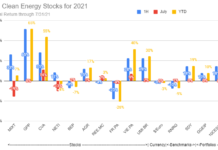Renewable energy finance has many different kinds of participants, as revealed recently at the Solar & Storage Finance conference hosted in NYC. [A longer companion piece details the specifics firms & individuals]. Listening to the live actors from the financial side of the renewable power industry moved the issues off the page, to a more concrete experience of their specific concerns, including the extent to which their distinct missions were siloed, how they are competitive, and how they synergize.

The presentations were organized to highlight these differences. Several panel discussions were set back-to-back the contrast between lenders vs tax equity investors, both in terms of their goals, but also the technical language of their issues. Tax equity people were far more involved in the legal contractual issues related to the org charts defining the relations between the parties, parsing out the effects of the partnership flips, or the effects on deal potential if back-levered debt is used, resulting in reduced exposure and profitability for tax equity. One of their greatest concerns was with the risk of an IRS decision to nullify the transaction as qualifying for the tax credits.
Debt players seemed to be more focused on the underlying economic viability of the project itself, approaching the proposition from the standpoint of risk underwriting for the operational elements such as the PPA & offtaker credit risk, the developer quality, locational issues, etc. There seemed to even be a sentiment by lenders to minimize the need for tax equity altogether, to support the developer’s profitability, explore options for matching the length of PPA term to loan term, and avoid refinancing & restructuring costs.
Another example was the difference between the portfolio managers interested in holding long-term assets vs. the project managers seeking to off-load completed developments to free up capital resources. Portfolio managers presented on several panels about “investor appetites”, securitization and secondary markets. Large investors are looking to acquire assets at any point along the timeline, in some cases very early, in other cases, as buyers in a secondary market for completed facilities already in operation. They model a value based on the cash flow projected from the offtakers, which the developers have packaged into a bid as low as possible. The concern is to translate the language of yields from the language of project finance. The project developers are working with the Levelized Cost of Energy (LCOE) behind the face of their bid, juggling to make the project capable of covering cost of capital & producing a net profit for themselves. Transactions structured as a purchase will entail price discovery by either negotiation or occurring in context of an auction. These transactions definitely benefit from the use of various kinds of intermediary services, to discover counterparties, negotiate price and other mediations.
Both parties have to factor in the full spectrum of risks, and each side may use various risk mitigation mechanisms, including insurance, surety performance bonds, revenue swaps. Costs to the developer for these mitigation guarantees are offset by reductions in costs for debt financing. The parties may even be able to collaborate on determining the level of risk mitigation to incur.
There were three representatives present working in risk mitigation, each of which were very interesting. The first was from Exxergy, who made vivid the risks associated with O&M contracts due to pervasiveness of equipment failure, inspection failures upon completion, maintenance failure, which can result in downtime, & in turn can effect not just profitability but survivability of a project. Exxergy has been evolving a broad system to evaluate operating risks, to certify & rank the risks at each stage of a development process. This which would not only make great strides in standardizing the underwriting of a project’s bankability, but in turn, could materially contribute to streamlining & accelerating development & market penetration.
The 2nd was a surety agent who advocated for the benefits of using surety to protect against contract failure, not just for performance on construction or O&M contracts but also for offtake payment performance, and several other applications, to protect against business interruption risks.
The 3rd was a “fintech” firm kWh Analytics which is at the forefront of innovating integrated risk mitigation services, combining a suite of insurance coverages, with a revenue swap version of a PPA, and weather derivatives.
Institutional investors as a type of portfolio manager (including insurance companies, pension funds, REITs, wealth funds, etc), were present on several panels describing their need for low risk, low return assets. Renewables can fit their parameters with stable revenues from 20-year PPAs issued by highly qualified offtakers. They seemed to favor aggregations over large individual projects, but overall, their renewable holdings constituted a very small percentage of the total assets under management, as a component in their “alt asset” categories. Nothing was mentioned about the possibilities for altering regulatory constraints upon institutional investors to catalyze greater participation in renewables.
Across the spectrum of participants, there was a consensus of caution about investing in storage projects, in part because revenue models are unsettled & complex. Some storage revenue comes from the wholesale market run by ISOs, regulated at a federal level by FERC, and some revenue comes from retail markets regulated by state PUC’s. Solutions to this were briefly touched upon, including a proposed subsidy under the State storage Roadmap plan to offset soft-costs, a mechanism to ensure storage is sold in 10-20yr contract increments, a state run central procurement agency for storage, and support for specific market applications, ie, for schools to offset seasonal shifts, and replacement of peaker plants.
Surprisingly little expression of visionary goals was heard related to climate change or the urgent need to accelerate decarbonization, or meeting commitments to UN or Paris agreements. Perhaps these ideals were assumed among a fraternity of professionals manifestly committed to renewable energy. The most overt statements were offered by the representatives from NYSERDA, NY City’s Sustainability Office, and several non-profit entities.
Rather it was a conference of technocrats, giving a glimpse of the nuts & bolts decision-making discussions one might expect to hear in their respective boardrooms. Conspicuously absent was any discussion of how finance would factor into reorganization of grid architecture. Grid integration is a major hurdle to renewables penetration, not only technically but also because of disincentives for large utilities, which show only as much support for DERs as is mandated and no more. A significant restructuring of grid architecture would potentially change those incentive relationships & open up a rapid non-linear proliferation of DERs that would include renewables and storage, and offer more opportunities for financing.








